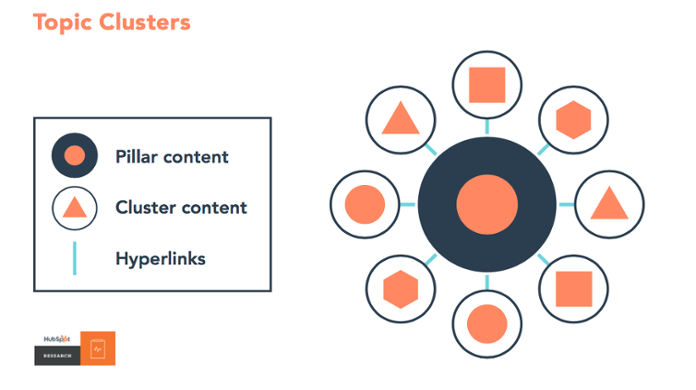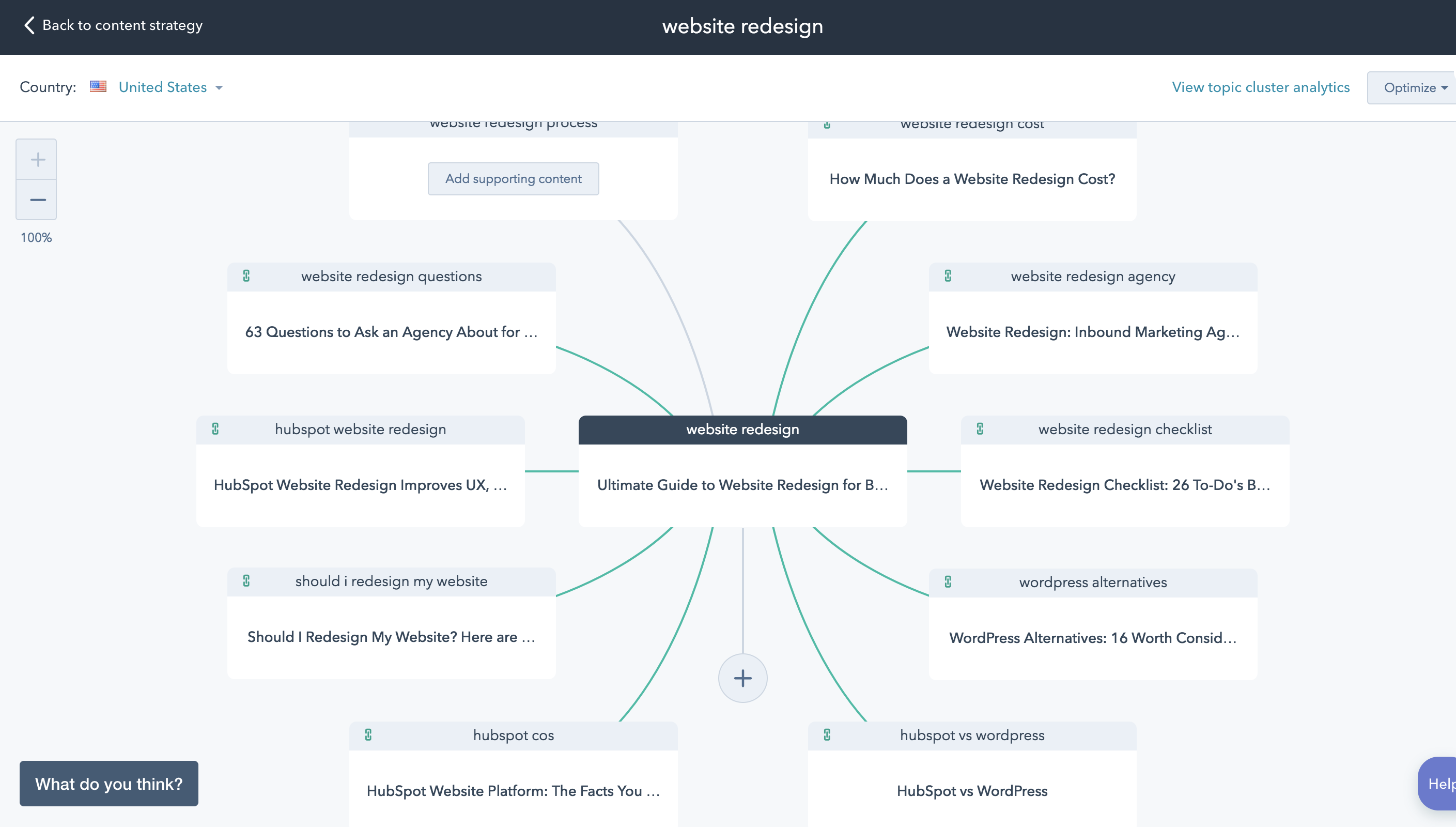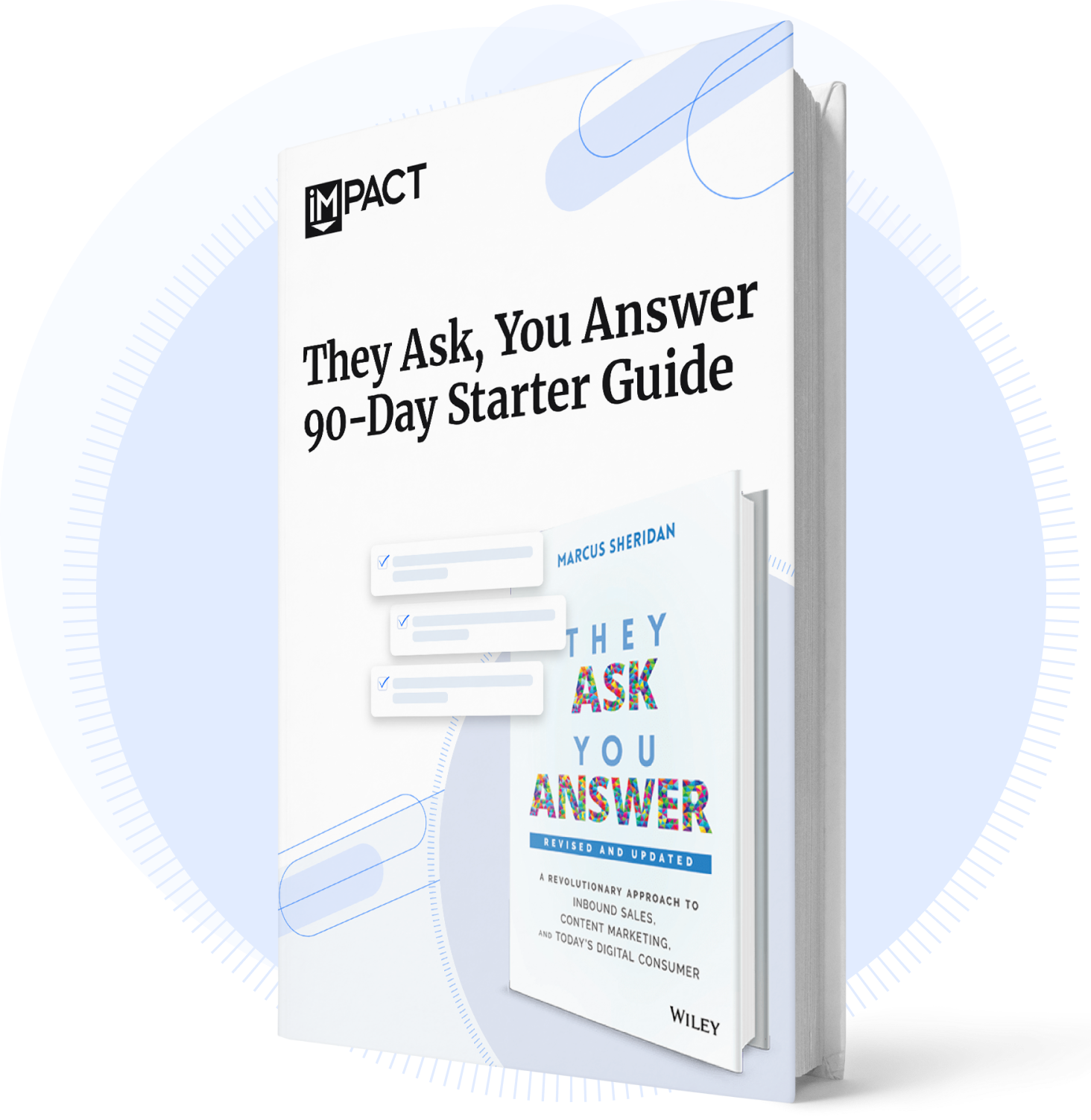Join 40,000+ sales and marketing pros who receive our weekly newsletter.
Get the most relevant, actionable digital sales and marketing insights you need to make smarter decisions faster... all in under five minutes.
Not to gratuitously pat myself on the back (just kidding, I love doing that), but I'm pretty darned impressed with myself.
I haven't written a substantive article on pillar content — arguably one of my favorite topics in all the land — since this past March, when I dove deep into how we measure and track the success of our content pillar strategy here at IMPACT.
Some might say I'm downright obsessed with the topic, and given thousands of words I've devoted to pillar content, I can understand why:
- Pillar Content: 4 Important Lessons for Beginners
- Pillar Content: 2 Dos & 2 Don'ts for Marketers
- Demystifying Pillar Content & Topic Clusters with Justin Champion of HubSpot
- What It Takes to Write Pillar Content with Carina Duffy
- How to Write a Pillar Content Page
- Pillar Content Experimentation Update
- How to Measure the Success of Pillar Content (Reporting Examples & Tips)
- Pillar Content Collaboration Tips with Dan Baum & Jason Linde
Clearly, I've got some opinions about pillar content — how to do it well, what most people are doing wrong, and so on.
But today, I'm not here to share meandering musings about my favorite approach to digital content strategy architecture.
Instead, I'm here to answer one of the most common questions I get from others, as well as from peers at IMPACT.
How do you integrate "The Big 5" business blog topics guaranteed to drive traffic, leads, and sales into a pillar content strategy?
I love this question for two reasons.
First, I love helping people understand that just because content pillars can seem big and scary, you're really just reorganizing your approach to how you connect your content together.
Second, you're going to end up naturally integrating "The Big 5" into your pillar content strategy without even realizing it. Which means that while you still need to be purposeful and strategic in how you build your pillar content and topic cluster strategies, you don't really need to do a lot of extra work to get those topics in there.
But first, let's do a little recap for those of you who are sitting there going, "Wait, what the heck are 'The Big 5' topics? I have no idea what you're talking about."
What Are "The Big 5" Content Topics & Why Are They So Powerful?
In response to the Great Recession of 2008, Marcus Sheridan and his partners realized they needed to do something different if they wanted to save their business — River Pools and Spas — from the brink.
(If you've read Marcus' best-selling book They Ask, You Answer, you've heard this story before.)
Marcus had realized in this moment that the same ol' traditional advertising avenues weren't going to cut it anymore. Moreover, the way buyers make their purchasing decisions had fundamentally changed, thanks to the internet.
So, instead of pouring thousands of dollars into radio and television ads, or features in the Yellow Pages, they decided to create a blog article or video answering every single question their potential buyers have about what they sold (fiberglass pools), and then they would publish them on their website.
They started seeing success from their efforts right away. But Marcus was curious if there were any patterns as to which content topics drove the most website traffic, leads, and sales.
After looking back at months worth of data, he found there were five specific content topic categories that, far and above any other topic, delivered the most bottom-line results for their business:
- Pricing and cost
- Comparisons
- Problems
- Reviews
- "Best of" lists
And thus, "The Big 5" was born.
Because, as it turns out, that pattern was not specific to River Pools and Spas. Thousands of companies around the world — including our own clients here at IMPACT — have proven time and again that a focus on those five core topic areas with their digital sales and marketing content is what brings home the bacon.
For example, Yale Appliance out of Massachusetts increased their revenue from $30 million to $117 million by adopting this approach to their digital marketing.
Needless to say, "The Big 5" is a big deal.
Which is why I'm not surprised I now how folks knocking on my door asking how pillar content plays nicely with "The Big 5."
OK, Now Let's Talk About How to Make Your Pillar Strategies & "The Big 5" Work Together
I'm going to be blunt with all of you — if you're expecting a complex answer to this question of how "The Big 5" and pillar content works together, you're going to be disappointed.
Because, really, there are only two things you need to do:
- Address "The Big 5" topics, as it makes sense, into your content pillar.
- Include "The Big 5" topics as subtopics in your topic cluster.
And that's it. There are no other magic tricks or content marketing voodoo you need to do to make this work.
In fact, I bet more than a few of you are going to look back at the topic clusters and content pillars you've already created and see that you're already achieving success with those big five content topics and your pillar strategy.
But to make sure we're all on the same page, I'm going to break down both steps individually.
"The Big 5" in Your Content Pillar
There will always be exceptions but, for the most part, you'll find yourself adding elements of "The Big 5" topics into the substance of your content pillar if you follow the process for developing a pillar strategy, which I outlined back in December of how to write your own content pillar.
But just in case you need a quick reminder, here is what you do — you need to answer the four following questions, once you've determined you've got a solid content pillar topic at your fingertips:
- Who is this searcher, and what are their biggest challenges and goals?
- Why are they searching for this? What questions are they trying to answer?
- OK, if we know who they are and what they're looking for, what do we cover?
- How will what we serve up on this pillar page be different than what they will find elsewhere?
More than likely, some of the questions they have — covered in the second bullet point above — will have to do with pricing, problems, comparisons, reviews, and best-of lists.
And if not, then that should be a red flag for you. Because, no matter what, there should always be something that goes back to "The Big 5" in the strategy for a content pillar.
For example, even our Ultimate Guide to Blogging Tips still follows this rule. Do we talk about pricing and reviews? Well, not so much. It's not a product or service-focused piece. It's much more top-of-the-funnel and educational in nature.
But I talk a lot about problems in that content pillar. Lots and lots of different types of problems.
However, if you look at our guide to HubSpot Marketing or Website Redesign for Businesses, you'll see pricing, comparisons, problems, reviews, and more in each of those pillars. Because that is naturally what our audience wants to know about, when it comes to those topics.
"The Big 5" in Your Topic Cluster
Now, as you (should) recall, the power of pillar content is not the pillar itself. Instead, your content pillar lives as the beating heart of a larger, networked piece of content architecture called a topic cluster.
This is what a topic cluster looks like:

But since I know shapes aren't always the greatest at conveying what something looks like in practice, here's a real-world example:

This is an older version of the topic cluster for website redesign.
Notice anything that might relate to "The Big 5" in those topics?
- How much does a website redesign cost?
- HubSpot vs. WordPress
- WordPress alternatives
Since then, we've expanded the subtopics in that cluster to include more specific topics around problems, reviews, and more.
Again, like your content pillar, this will happen naturally. Because, if you're creating content about the right things — the questions your potential buyers want answers to the most above anything else — you will naturally be creating content in "The Big 5" categories.
Yes, That's Really All There Is to It
Part of me is worried I let a few of you down with such a simple and direct answer to this question.
But if you're already doing a great job listening to your audience, so as to understand what the questions are you need to be answering if you want to be seen as the go-to resource in your given space, you're likely already doing what I mentioned above.
You just didn't realize it.
And if what I have suggested here does seem far off the mark from what you're doing, this is a red flag moment. Stop what you're doing immediately and meet your team to reevaluate what you're choosing to create content about and why. You should also create a content mission statement, if you don't have one, so everyone understands the "why" behind what you're doing.
Because, if embracing "The Big 5" more holistically and purposefully into your pillar content strategy seems "outside of the box" for you, somewhere along the way, you lost touch with your customer and what really matters most to them.
But if you stop and listen, they'll tell you what questions they need you to answer.



